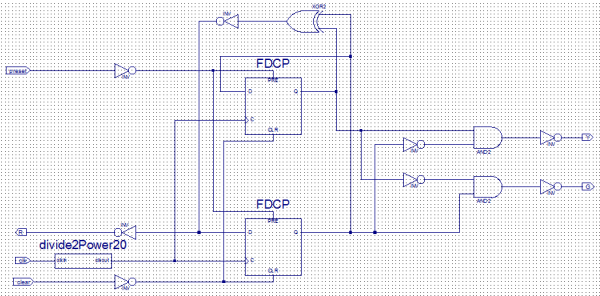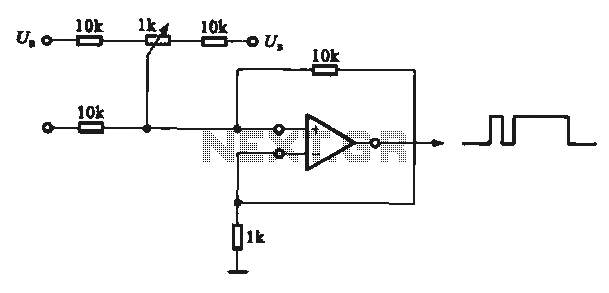
Door touch switch circuit (CD4069) schematic

A CMOS gate exhibits high input impedance, which allows it to respond to changes in input levels due to human contact, thereby triggering the toggling of gates. The circuit utilizes this characteristic to create a touch lamp switch. The circuit, as illustrated in the accompanying figure, comprises six CD4069 inverters and a small DC relay. Three of the CD4069 inverters (D1 to D3) are configured in series, with resistive and capacitive components coupled through a feedback mechanism. This design ensures effective signal transmission while also establishing a locking circuit.
The touch lamp switch circuit leverages the properties of CMOS technology to facilitate a user-friendly interface for controlling lighting. The high input impedance of the CMOS gates means that minimal current is drawn from the input source, making it sensitive to touch activation. When a user makes contact with the designated area of the circuit, the input level changes, which is detected by the inverters.
The CD4069 inverters serve as the core of the circuit, where each inverter not only inverts the input signal but also contributes to the overall behavior of the circuit. The series arrangement of inverters (D1 to D3) enhances the signal processing capability by providing amplification and ensuring that the output maintains a stable state once activated. The feedback element, which includes resistors and capacitors, plays a critical role in maintaining this state, effectively creating a bistable multivibrator configuration. This feedback mechanism allows the circuit to "lock" into its current state, enabling the lamp to remain on or off until the next touch is detected.
The small DC relay in the circuit acts as a switch for the lamp, allowing it to control higher power loads while being driven by the low-power output of the CMOS inverters. When the circuit is triggered by touch, the relay is energized, closing the circuit to the lamp and causing it to turn on. Releasing the touch will not immediately turn off the lamp due to the locking mechanism, ensuring that the lamp remains on until the input condition changes again.
Overall, this touch lamp switch circuit exemplifies the effective use of CMOS technology in creating responsive, low-power control systems suitable for various applications in lighting and automation.CMOS gate has a high input impedance, resistance by human contact, you can make it the input level is changed, triggering gates toggled. The circuit is the use of this feature of its composition one case touch lamp switch, the circuit as shown in FIG. Circuit consists of a six-CD4069 inverter and a small DC relays, CD4069 three inverters Dl ~ D3 series combination of resistance and capacitance coupled through the feedback element, both to ensure signal transmission, but also to achieve a locking circuit.
The touch lamp switch circuit leverages the properties of CMOS technology to facilitate a user-friendly interface for controlling lighting. The high input impedance of the CMOS gates means that minimal current is drawn from the input source, making it sensitive to touch activation. When a user makes contact with the designated area of the circuit, the input level changes, which is detected by the inverters.
The CD4069 inverters serve as the core of the circuit, where each inverter not only inverts the input signal but also contributes to the overall behavior of the circuit. The series arrangement of inverters (D1 to D3) enhances the signal processing capability by providing amplification and ensuring that the output maintains a stable state once activated. The feedback element, which includes resistors and capacitors, plays a critical role in maintaining this state, effectively creating a bistable multivibrator configuration. This feedback mechanism allows the circuit to "lock" into its current state, enabling the lamp to remain on or off until the next touch is detected.
The small DC relay in the circuit acts as a switch for the lamp, allowing it to control higher power loads while being driven by the low-power output of the CMOS inverters. When the circuit is triggered by touch, the relay is energized, closing the circuit to the lamp and causing it to turn on. Releasing the touch will not immediately turn off the lamp due to the locking mechanism, ensuring that the lamp remains on until the input condition changes again.
Overall, this touch lamp switch circuit exemplifies the effective use of CMOS technology in creating responsive, low-power control systems suitable for various applications in lighting and automation.CMOS gate has a high input impedance, resistance by human contact, you can make it the input level is changed, triggering gates toggled. The circuit is the use of this feature of its composition one case touch lamp switch, the circuit as shown in FIG. Circuit consists of a six-CD4069 inverter and a small DC relays, CD4069 three inverters Dl ~ D3 series combination of resistance and capacitance coupled through the feedback element, both to ensure signal transmission, but also to achieve a locking circuit.





